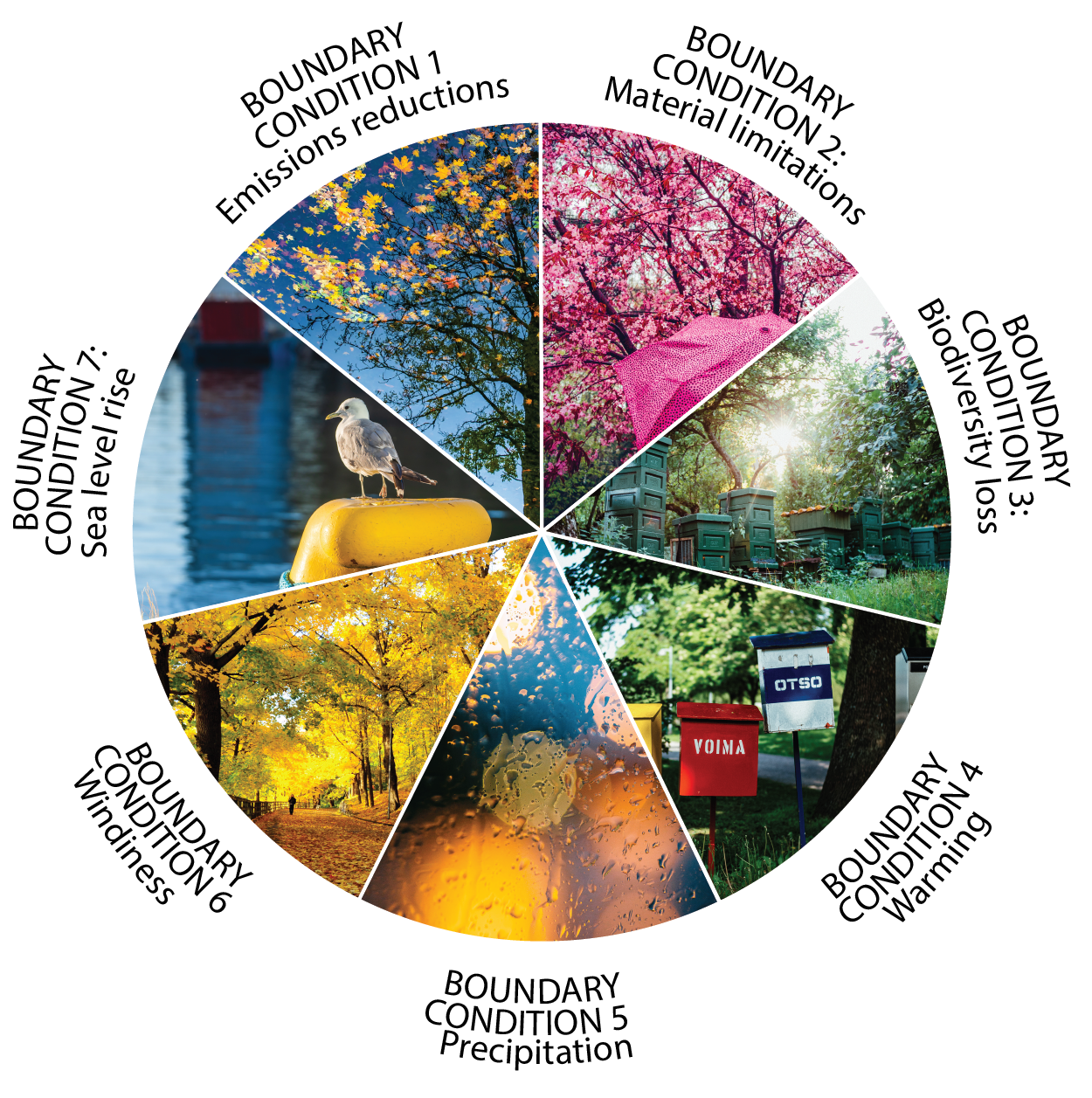Not just emissions optimisation
While making the zero carbon target more concrete, it must be ensured that the chosen measures do not endanger other planetary boundaries that are critical for our finite and changing world. In addition to the need to reduce emissions, the following must be taken into account:
- Material limitations: The solutions must also work in a resource-scarce world and rely on existing infrastructure. Therefore, the presented solutions cannot be based only on new technology.
- Biodiversity loss: The solutions cannot accelerate biodiversity loss. The preservation of vegetated areas and the replacement of lost vegetated areas must be ensured.
- Warming: The passive resilience of the living environment must be ensured. Solutions that accelerate the urban heat island phenomenon should be avoided.
- High precipitation: The city must prepare for the increased risk of storm water flooding in its critical infrastructure. Increasing the amount of permeable soil must be ensured.
- Windiness: Preparation for increasing storm damage both in terms of infrastructure and nature must be ensured.
- Rise in the sea level: Preparations should be made for increased risks of seawater flooding.

The dimensions of justice in climate action can be examined using the common distinction between distributive, procedural and recognitional justice.
From the point of view of planning that takes into account the carbon negativity target and other planetary boundaries, justice encompasses four specific themes, in addition to the ones mentioned above:
Structural justice: making the perspective of different actors visible in the process, also from outside the existing network and administrative structures.
Multispecies justice: making the fact that the action/inaction improves/weakens the state of nature, biodiversity or the living conditions of other species visible in the process.
Temporary justice: making the perspective, needs and wants of future generations visible in the process.
Regional justice: making it visible in the process whether the impacts have significant regional differences or if they increase disadvantages/benefits crossing the regional borders and globally.